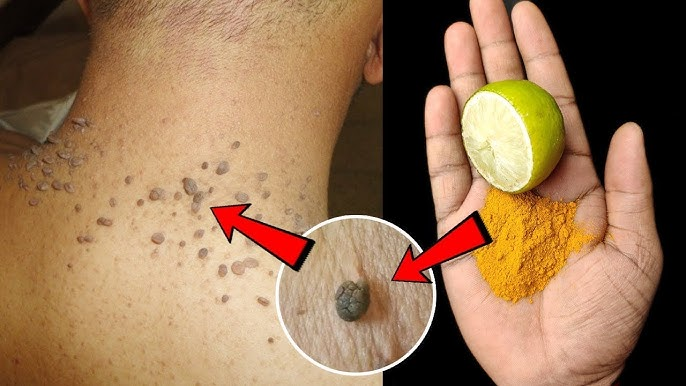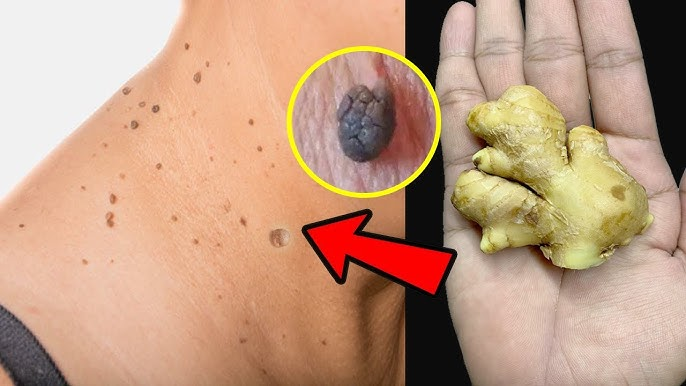Skin tags, or acrochordons, are common benign growths that often appear in areas where skin rubs against skin or clothing, such as the neck, armpits, groin, and eyelids. While generally harmless, they can be bothersome or unsightly, prompting many to seek removal options. This guide explores various methods for removing skin tags, ranging from home remedies to professional treatments, ensuring you have the information needed to make an informed decision.
Understanding Skin Tags
What Are Skin Tags?
Skin tags are small, soft, flesh-colored or slightly darker growths that hang off the skin by a thin stalk. They are composed of collagen fibers, blood vessels, and skin cells. While they don’t pose any health risks, their presence can be a cosmetic concern for some individuals.
Causes and Risk Factors
The exact cause of skin tags isn’t fully understood, but several factors may contribute to their development:
- Friction: Areas where skin rubs against skin or clothing are more prone to skin tag formation.
- Age: Skin tags are more common in older adults.
- Genetics: A family history of skin tags may increase the likelihood of developing them.
- Obesity: Excess weight can lead to more skin folds, increasing friction.
- Hormonal Changes: Conditions like pregnancy or diabetes can elevate the risk.
Home Remedies for Skin Tag Removal
While professional treatments are recommended for safe and effective removal, some individuals opt for home remedies. It’s essential to approach these methods with caution and consult a healthcare provider before attempting them.
1. Apple Cider Vinegar
Apple cider vinegar (ACV) is a popular home remedy believed to work by breaking down the tissue of the skin tag.
- Method: Soak a cotton ball in ACV and apply it to the skin tag. Cover with a bandage and leave it on for 15-30 minutes daily.
- Considerations: Prolonged use can cause skin irritation or burns.
2. Tea Tree Oil
Tea tree oil has antimicrobial properties and is thought to dry out the skin tag, causing it to fall off.
- Method: Apply one to two drops of tea tree oil to the skin tag using a cotton ball. Secure with a bandage and leave it on for 10 minutes, repeating three times a day.
- Considerations: Some individuals may experience skin irritation.
3. Dental Floss or Thread Ligation
This method involves tying a piece of dental floss or thread around the base of the skin tag to cut off its blood supply.
- Method: Gently tie the floss around the base of the skin tag and leave it in place until the tag falls off.
- Considerations: This method carries risks of infection and should be performed with caution.
Over-the-Counter (OTC) Products
Several OTC products claim to remove skin tags. These include cryotherapy kits, removal creams, and patches.
1. Cryotherapy Kits
Cryotherapy involves freezing the skin tag with liquid nitrogen, causing it to fall off.
- Example: Dr. Scholl’s® Freeze Away® Skin Tag Remover is FDA-cleared for at-home use. It uses the same cryotherapy technology employed by healthcare professionals.
2. Removal Creams and Patches
These products typically contain salicylic acid or other active ingredients aimed at dissolving the skin tag.
- Considerations: The effectiveness and safety of these products can vary. It’s crucial to follow the manufacturer’s instructions and consult a healthcare provider if unsure.
Professional Medical Treatments

For those seeking a more definitive and safe solution, professional treatments administered by healthcare providers are recommended.
1. Surgical Excision
A healthcare provider uses a scalpel or surgical scissors to cut off the skin tag after numbing the area with a local anesthetic.
- Advantages: Quick removal with immediate results.
- Considerations: May require stitches and carries a risk of scarring.
2. Cryotherapy
Cryotherapy involves applying liquid nitrogen to freeze and destroy the skin tag.
- Advantages: Effective for small to medium-sized skin tags.
- Considerations: May cause temporary redness or blistering.
3. Electrocautery
This method uses an electric current to burn off the skin tag.
- Advantages: Precise removal with minimal bleeding.
- Considerations: Requires a trained professional to perform.
When to Consult a Healthcare Provider
While skin tags are generally harmless, there are instances when medical consultation is necessary:
- Changes in Appearance: If a skin tag changes color, size, or shape.
- Pain or Bleeding: If the skin tag becomes painful or starts bleeding.
- Location: If the skin tag is in a sensitive area, such as near the eyes or genital region.
- Multiple Tags: If you develop multiple skin tags rapidly.
A healthcare provider can assess the skin tag to ensure it’s benign and discuss appropriate removal options.
Prevention Tips
While it’s not always possible to prevent skin tags, certain measures may reduce the risk:
- Maintain a Healthy Weight: Reduces friction in skin folds.
- Manage Blood Sugar Levels: Especially important for individuals with diabetes.
- Avoid Tight Clothing: Reduces skin irritation.
- Regular Skin Checks: Monitor for any changes in existing skin tags or new growths.
Conclusion
Skin tags are common and typically harmless growths that can be managed through various methods. While home remedies and OTC products may offer solutions, professional treatments provide a safer and more effective approach. Always consult with a healthcare provider before attempting any removal method to ensure the best outcome.
If you have any experiences or tips regarding skin tag removal, feel free to share them in the comments below. Your insights could help others facing similar concerns
Cleveland Clinic – Skin Tag Removal Methods
Link: https://health.clevelandclinic.org/skin-tag-removal/
Anchor text: “effective skin tag removal methods”
American Academy of Dermatology – Skin Tags
Link: https://www.aad.org/public/diseases/a-z/skin-tags
Anchor text: “understanding skin tags and treatment options”
Healthline – Home Remedies for Skin Tags
Link: https://www.healthline.com/health/home-remedies-for-skin-tags
Anchor text: “natural home remedies to remove skin tags”
.


1 thought on “Comprehensive Guide to Skin Tag Removal: Safe and Effective Methods”